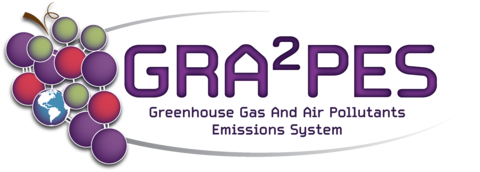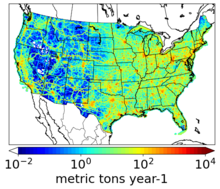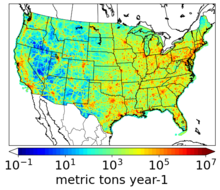Summary
NOAA's Chemical Science Laboratory and NIST's Greenhouse Gas Measurement Program are working collaboratively to develop and maintain the Department of Commerce's capability to measure and model U.S. emissions of greenhouse gases and hazardous air pollutants. A central focus of this joint research effort for NIST is the evaluation of associated uncertainties. Together the NOAA and NIST teams are helping to better qualify the underlying data products of interest to researchers and stakeholders in both the traditional air quality (AQ) and greenhouse gas (GHG) mitigation communities.
Description

The GReenhouse gas And Air Pollutants Emissions System (GRA2PES) uses publicly accessible GHG emissions activity data across multiple economic sectors, including energy production, manufacturing, transportation, agriculture, and land use, among others. The initiative involves the development of "bottom-up" emission data and uncertainty evaluation at spatial and temporal resolutions relevant to both improving air quality and mitigating GHG emissions including at city, state, and regional levels. In the future, GRA2PES will also combine atmospheric air pollutant and GHG observations from various atmospheric measurement platforms along with meteorological observations and models to evaluate and refine emission information and uncertainties.
The GRA2PES initiative aims to identify areas where improving data and models would most help us understand GHG emissions. By combining different types of emissions information and using statistical techniques, we assess the accuracy of the estimates. Collaborating with other organizations working on similar projects, such as the UK's National Physical Laboratory and the EU's Environment Agency, is mutually beneficial.
Currently, GRA2PES provides emissions for the year 2021 at 4 km x 4 km spatial resolution with year, month, day-of-week, and diurnal temporal information. Specifically, GRA2PES utilizes datasets from the U.S. Energy Information Administration (EIA) and the U.S. Environmental Protection Agency (EPA), and leverages a few well evaluated inventories for specific sectors, including the Fuel-based Oil and Gas (FOG) inventory, the Fuel-based Inventory of Vehicle Emissions (FIVE), and the Volatile Chemical Products (VCP) inventory. Additional years will be added in the future.
The live data will be available for the public as of Sept. 19. For a technical explanation of the data see this ReadMe document.


Other recommended reading:
Gorchov Negron, A., et al. (2018). "Development of a fuel-based oil and gas inventory of nitrogen oxides emissions." Environmental Science & Technology.
Francoeur, C. B., et al. (2021). "Quantifying Methane and Ozone Precursor Emissions from Oil and Gas Production Regions across the Contiguous US." Environmental Science & Technology.
McDonald, B. C., et al. (2014). "High-resolution mapping of motor vehicle carbon dioxide emissions." Journal of Geophysical Research-Atmospheres 119: 5283-5298.
Harkins, C., et al. (2021). "A fuel-based method for updating mobile source emissions during the COVID-19 pandemic." Environmental Research Letters 16.
McDonald, B. C., et al. (2018). "Volatile chemical products emerging as largest petrochemical source of urban organic emissions." Science 359(6377): 760-764.

